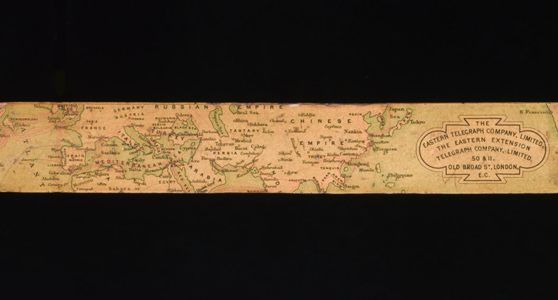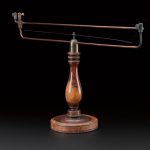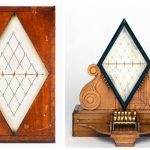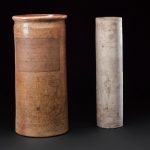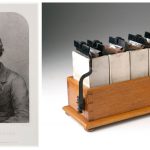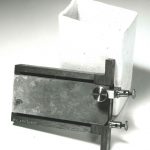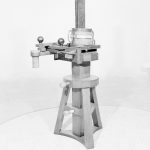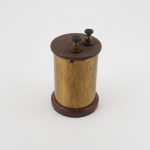Technologies of Romance: Valentine from a Telegraph Clerk (m) to a Telegraph Clerk (f): the material culture and standards of early electrical telegraphy
Keywords
electrical telegraphy, James Clerk Maxwell, poetry, scientific instruments
Valentine from A Telegraph Clerk ♂ to a Telegraph Clerk ♀, by JC Maxwell, 1860
https://dx.doi.org/10.15180/191201/001 The tendrils of my soul are twined
With thine, though many a mile apart.
And thine in close coiled circuits wind
Around the needle of my heart.
Constant as Daniell, strong as Grove.
Ebullient throughout its depths like Smee,
My heart puts forth its tide of love,
And all its circuits close in thee.
O tell me, when along the line
From my full heart the message flows,
What currents are induced in thine?
One click from thee will end my woes.
Through many an Ohm the Weber flew,
And clicked this answer back to me;
I am thy Farad staunch and true,
Charged to a Volt with love for thee
Introduction
https://dx.doi.org/10.15180/191201/002In 1860, renowned natural philosopher (now referred to as a ‘scientist’ or, more specifically in the case of Clerk Maxwell, a ‘physicist’) James Clerk Maxwell wrote ‘Valentine from a Telegraph Clerk ♂ [male] to a Telegraph Clerk ♀ [female]’ (Harman, 2001).[1] The short poem was a slightly tongue-in-cheek ode to the romance of the electric telegraph littered with references to manufacturers of batteries used in electrical telegraphy around this time such as John Daniell, Alfred Smee, and William Grove and electrical units (now SI derived units) such as Ohm, Weber, Farad and Volt (Mills, 1995).
Although intended as slightly tongue-in-cheek, Maxwell’s short ode can be read as a state of play of electrical telegraphy as it stood in 1860 when Britain dominated the limited undersea electrical telegraph network as it existed at the time and continued to do so as the network expanded to a global interconnected electrical network by the end of the nineteenth century.
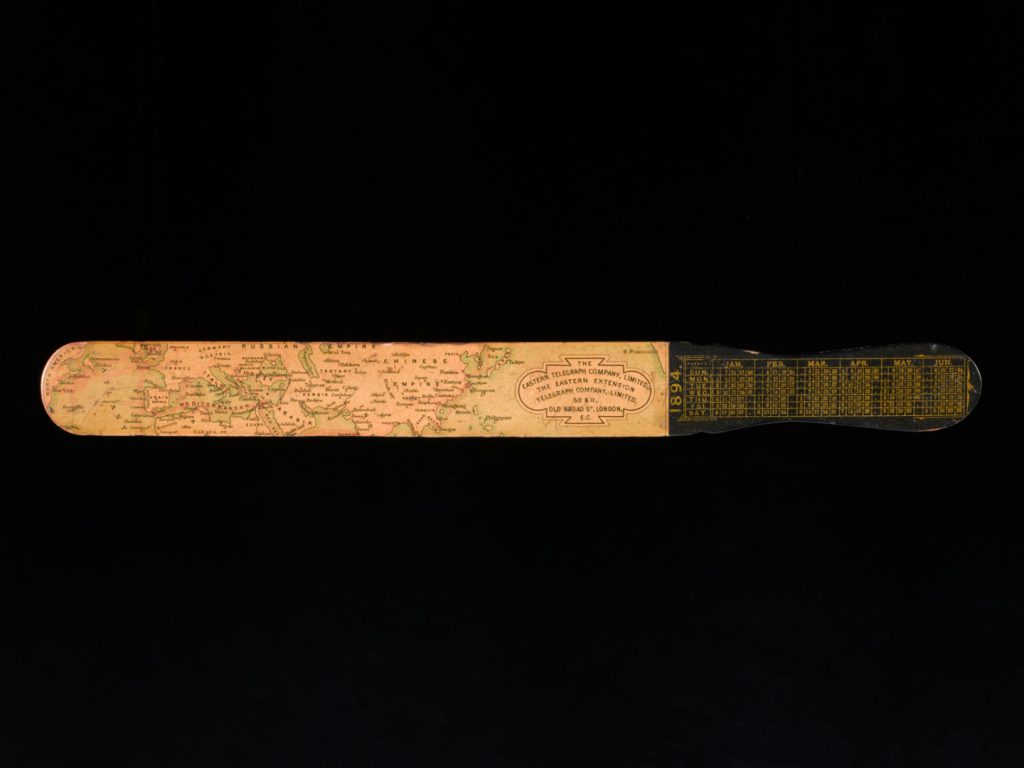
This sixteen-line poem was but one from a lifetime of poetry on the part of Clerk Maxwell – many exploring the wonders and romance of the new age of electrical telecommunications through which Clerk Maxwell lived and to which he actively contributed. Three years earlier in September 1857, Maxwell had also written a poem about the failed transatlantic telegraph cable, The song of the Atlantic Telegraph Co.[2]
It would not be until 1866, nearly a decade after the failure of the initial 1857 transatlantic cable, that the first successful commercial transatlantic telegraph cable was laid and by the end of the nineteenth century a vast network of telegraph cables connected the furthest corners of the globe.[3] By this time, an extended telegraph network led to decreased costs and the telegraph became a more accessible and everyday form of communication. It was the romance, possibility, and personal use of the telegraph which caught the popular imagination, and these aspects began to be featured in popular literature in the late Victorian age – as they had been, in a more technical form, in Clerk Maxwell’s original 1860 poem above (Bruton, 2015). Below I have used artefacts from the Science Museum Group’s extensive holdings relating to the history of electrical telegraphy – many on display in the Information Age gallery at the Museum – to engage with both the technology and romance of the early years of electrical telegraphy.[4] In this article, I explore, situate and contextualise the technology – the material culture and early technical standards – as well as the human aspect – the romance and promise – of electrical telegraphy referred to in Clerk Maxwell’s poem above.
Needle
https://dx.doi.org/10.15180/191201/003
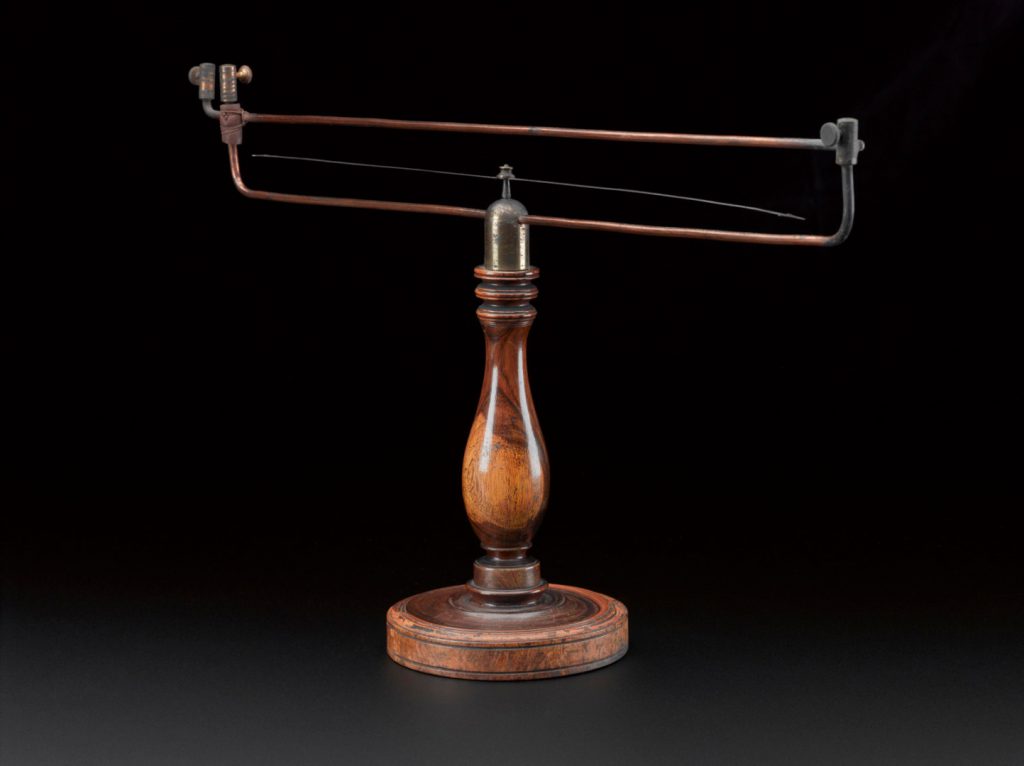
In 1820, Danish natural philosopher Hans Christian Ørsted published in Latin the results of his experiments and demonstration on the direct relationship between electricity and magnetism in a report entitled Experimenta circa effectum conflictus electrici in acum magneticam (Ørsted, 1820). In the same year, an English-language translation of Ørsted’s paper was published as ‘Experiments on the Effect of a Current of Electricity on the Magnetic Needle’ in Annals of Philosophy (Ibid, pp 273–277). Ørsted’s work continued to be of interest to telegraph engineers more than fifty years later: in 1876, a statue was erected to the memory of Ørsted in Copenhagen and the Journal of the Society of Telegraph Engineers used this event to re-print Ørsted’s original paper in Latin alongside an English-language translation by Reverent J E Kempe, Rector of St James’s, Piccadilly, London (Ørsted, 1876; Madsen, 1876).
Ørsted had discovered that a magnetised compass needle moved when brought near a wire in which electric current was flowing, and that the effect was increased if the wire was formed into a coil. The Ørsted Compass Needle shown above, currently on display in the Information Age gallery at the Science Museum, is believed to have been used at lecture demonstrations in London in the 1820s – the same decade of the publication in Latin, English and other languages of Ørsted’s ground-breaking research on electromagnetism. It was also around this time that it became apparent that Ørsted’s apparatus had application far beyond scientific research and demonstration and had immense potential as a practical form of long-distance electrical signalling, also known as electrical telegraphy.
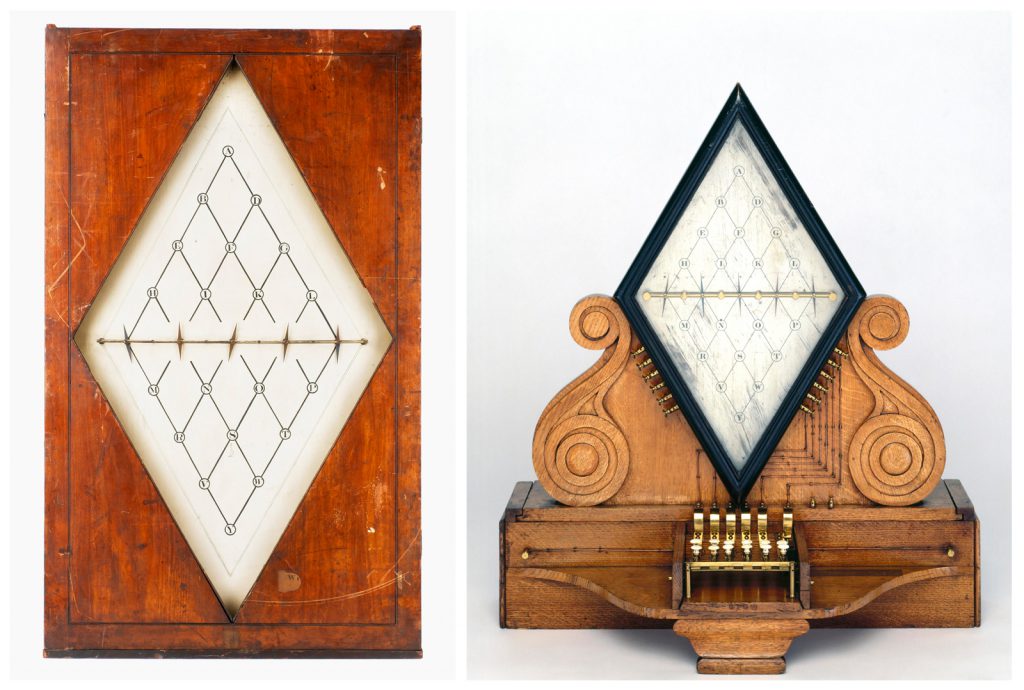
One of the earliest and best-known applications of Ørsted’s apparatus and principles to a form of electrical telegraphy was Cooke and Wheatstone’s five-needle telegraph, patented by William Fothergill Cooke and Charles Wheatstone in 1837 (Liffen 2010). Considered the first practical electrical telegraph apparatus, a letter of the alphabet was communicated when any two of the five needles on the dial face pointed to a letter. This meant the system could only communicate using twenty letters of the alphabet. Two Cooke and Wheatstone five-needle dials have survived: one on display in the Information Age gallery at the Science Museum (shown above) and one at the National Museum of Scotland – the latter, as communicated to me by John Liffen, has some puzzling features which do not match the Science Museum example but still seems likely to date from 1837.
As discussed in more detail in John Liffen’s 2010 journal article, there are also two or three other more complete but later working models of Cooke and Wheatstone’s 1837 five-needle dial telegraph – one (also shown above) on display in the Making the Modern World gallery at the Science Museum; one at the Museum fur Kommunikation in Berlin; and a third example, also believed to date from the same time, in the Powerhouse Museum in Sydney (Ibid). All three were working models made in 1849–50 to demonstrate in a patent dispute.
An article in The Times (1839) described Cooke and Wheatstone’s telegraph system as being ‘during two months, constantly worked at the passing of every [Great Western Railway] train between Drayton, Hanwell, and Paddington’ (The Times, 1839). The article went on to describe the early – if not earliest – telegraphists employed on the line as being ‘two of the boys from the Deaf and Dumb Asylum in the Kent-road have been at the Paddington station for five or six weeks, where they were instructed in the working of the machinery by Mr. Ralph Hutchinson, and they are now perfectly competent to superintend the telegraph at any one of the stations’, an early example of a new technology enabling accessible employment opportunities for those previously marginalised from most workplaces.
Daniell
https://dx.doi.org/10.15180/191201/004
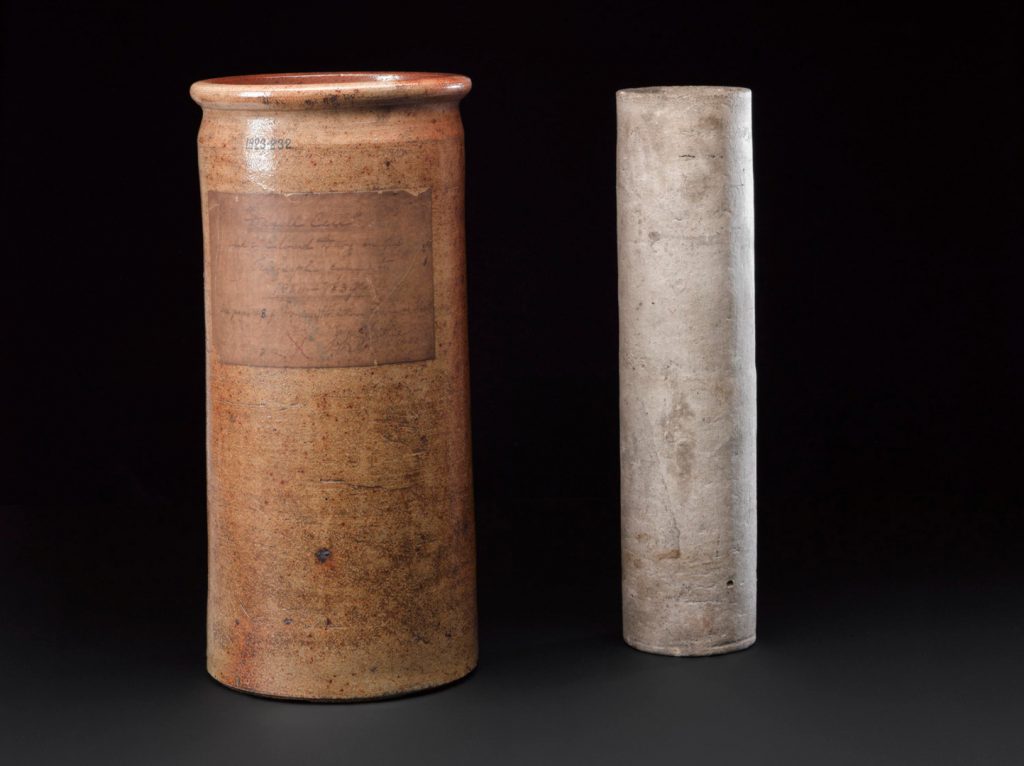
In 1836, British natural philosopher and first Professor of Chemistry at University College London, John Frederic Daniell, developed the Daniell cell. The Daniell cell was an electrochemical battery contemporaneously referred to as a ‘double fluid battery’ which used copper sulphate and zinc sulphate fluids and offered an improvement in efficiency over the Voltaic cell (Fahie, 1837, pp 216–217). The Daniell cell was more continuous and efficient in operation, especially compared to the single-fluid battery, but had a tendency to decline in efficiency over time (ETHW).
In 1837, Daniell received the Copley Medal – the Royal Society’s oldest and most prestigious award, granted for outstanding achievements in research in any branch of science – for ‘his two papers on voltaic combinations published in the Philosophical Transactions for 1836’ (Daniell, 1836). These papers related to the electrochemistry which underpinned the Daniell cell. ‘The far-famed Daniell cell’ (as per contemporary electrical telegraphy historian and Irishman J J Fahie) became one of the standard primary batteries for electrical telegraphy and remained so into the mid-nineteenth century when Clerk Maxwell wrote the poem quoted above (Fahie, 1837). It was the same J J Fahie who discovered the Daniell Cell shown above – now on display in the Information Age gallery – in a field in Somerset in 1883 and it is believed to have been used and possibly made by chemist Edward Davy, who around 1837–1838 was a rival to Cooke and Wheatstone in developing a practical electric telegraph system.[5] In 1838, Davy emigrated to Australia leaving behind his electrical telegraph apparatus in storage with much being destroyed with the exception of a few Daniell cells.
Grove
https://dx.doi.org/10.15180/191201/005
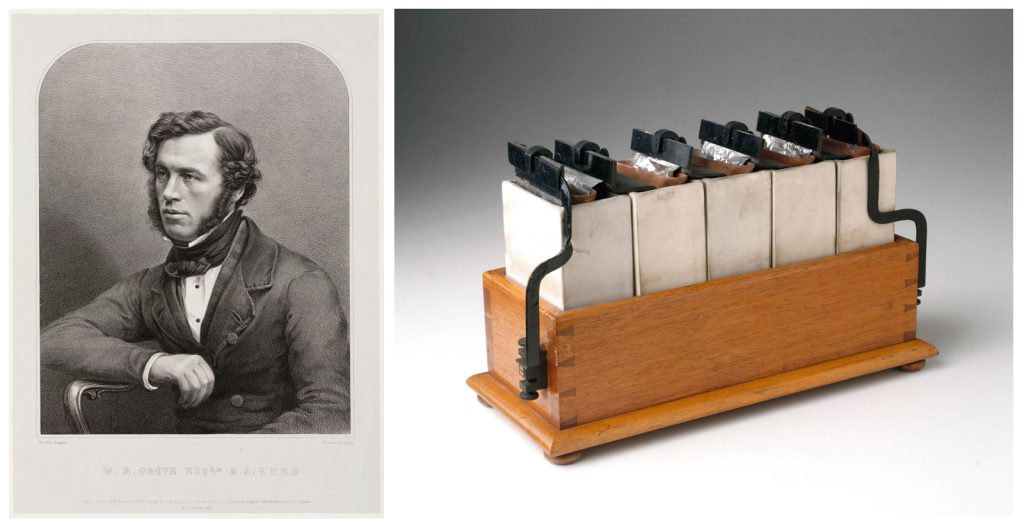
Another standard battery incorporated into use in electrical telegraphy in the mid-nineteenth century was the Grove voltaic cell, developed by Welsh judge and natural philosopher William Grove. Initially developed in 1839, the battery continued to be used throughout the mid-nineteenth century and very probably beyond. In the mid-nineteenth century, the Grove cell was favoured by the electrical telegraph industry in the US and Britain as it had a higher output voltage compared to the earlier Daniell cells mentioned previously. For example, the commercial version of the Grove cell made in 1895 by the scientific instrument makers Elliott Brothers shown above was a battery of five Grove cells with a total voltage of 9 volts so about 1.8 volts current output per cell.[6] The Grove cell had electrodes made of platinum and zinc with the electrolyte being dilute sulphuric acid and the depolariser being strong nitric acid.[7] However, the increased scale and popularity of the electrical telegraph network in the late nineteenth century led to the Grove cell falling out of use as, unlike the Daniell cell, it did not produce a constant voltage; the platinum electrode was expensive; and furthermore the battery discharged poisonous nitrogen dioxide, which was hazardous to health.[8] As such the example shown above may have been a rare surviving commercial version of the Grove cell from the late nineteenth century.
Smee
https://dx.doi.org/10.15180/191201/006
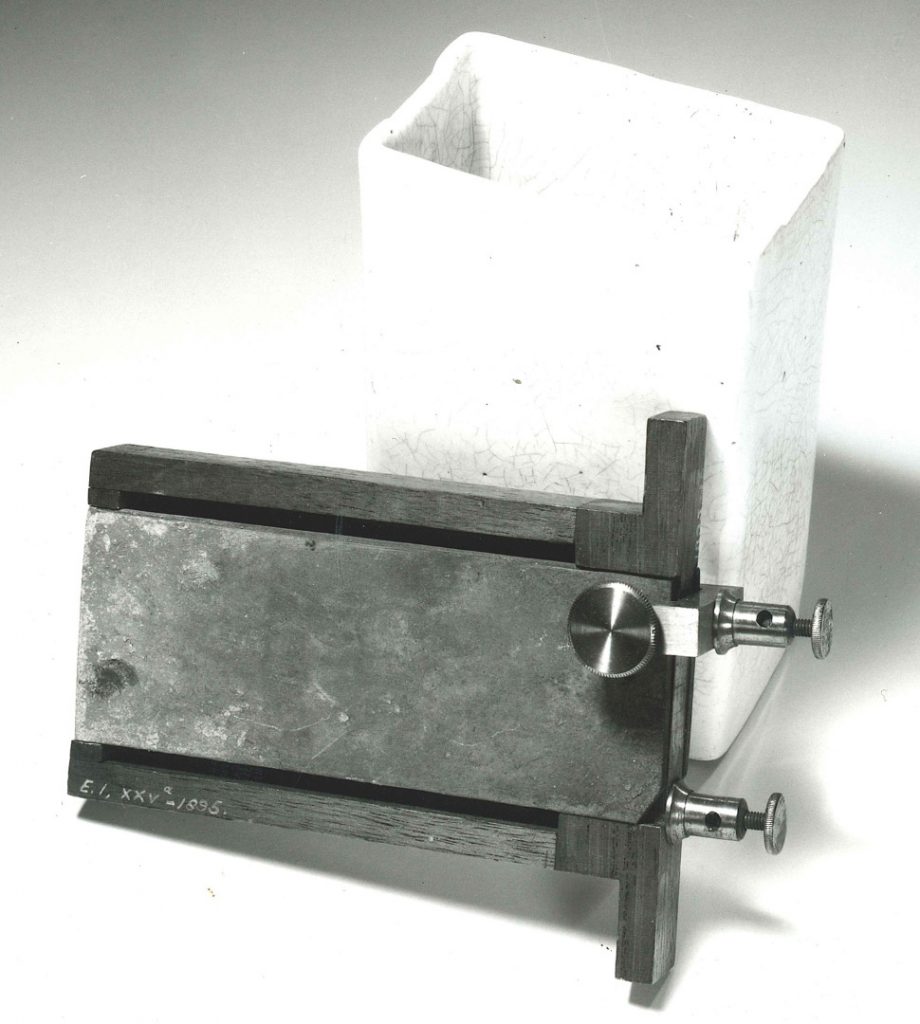
In 1840, surgeon and later electro-chemist Alfred Smee developed an improved version of the single-fluid battery cell called the Smee cell, for which he won the prestigious Gold Isis medal of the Society of Arts in 1841.[9] The Smee cell was popular in both the electrical telegraphy and printing industries, including the printing of banknotes. The latter was a family connection: Smee’s father William Smee was Chief Accountant for the Bank of England (Mackenzie, 1953).
Ohm
https://dx.doi.org/10.15180/191201/007
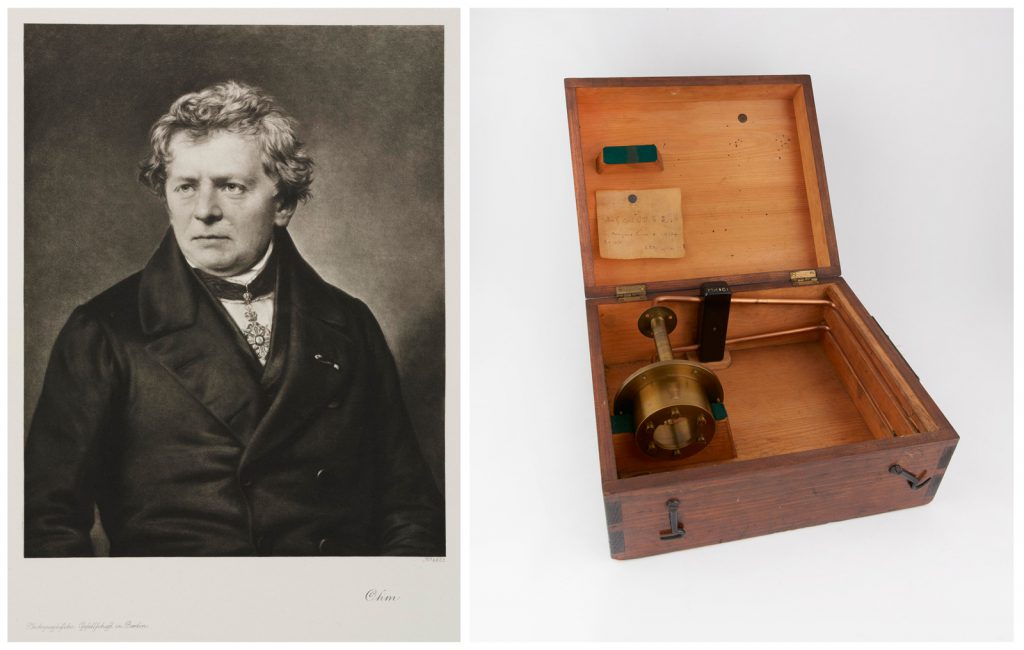
In 1862, the British Association for the Advancement of Science (BAAS) appointed the first Commission to study electric units and standards of electrical resistance. The committee consisted of experts in electrical engineering and science chaired by William Thomson with members including Fleeming Jenkin, James Prescott Joule, Clerk Maxwell, and many others. In 1864, the Ohmad – named after German physicist Georg Simon Ohm – was proposed by the committee to be the standard electrical unit (later SI derived unit) for electrical resistance; by 1867, it had been renamed the Ohm, as it is currently referred to (Report of the Committee on Standards of Electrical Resistance, 1864 and 1867).
At the 1881 Congrès internationale des électriciens (International Electrical Congress) and the related 1884 International Conference for Determination of Electrical Units, the Ohm was defined in relation to the resistance of a mercury column of specified weight and length, with slightly differing lengths due to variance between different national standards of Ohm. In addition, the inconsistency of the cross-section of the glass tubing of the mercury column meant reproducing a physical standard Ohm was challenging. Instead other apparatus such as the standard one-ohm resistor (shown above) was developed to circumvent this problem and to become a physical artefact standard for the Ohm.[10]
Weber
https://dx.doi.org/10.15180/191201/008
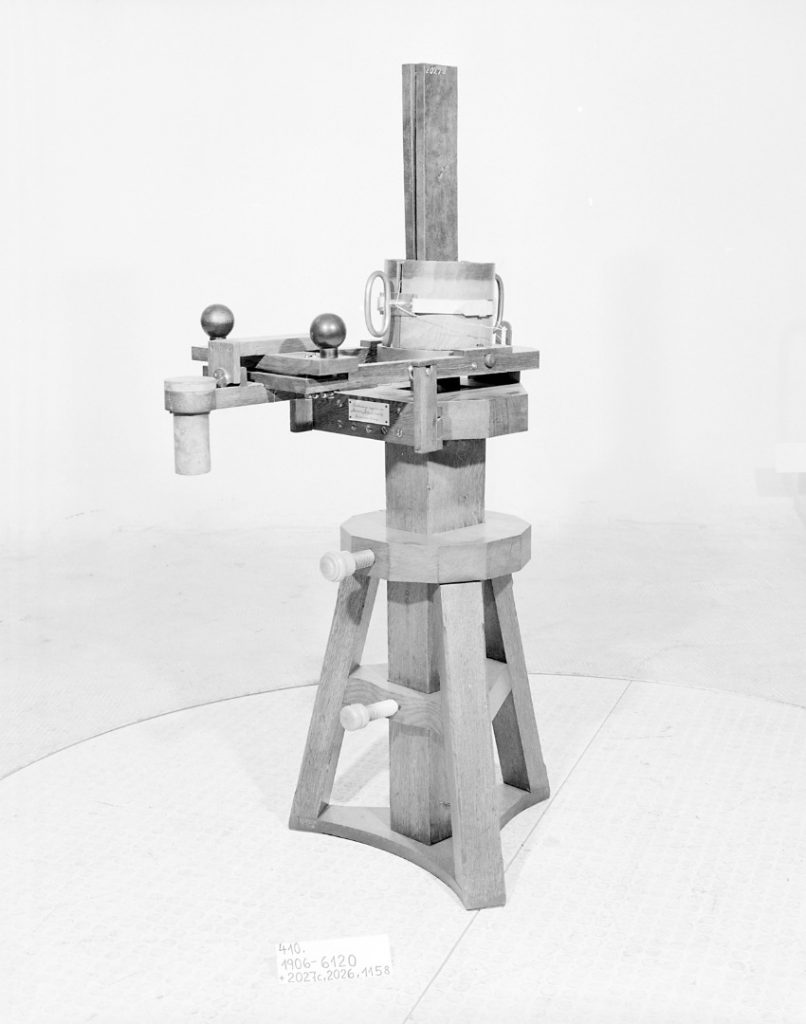
In 1833, director of Gottingen Observatory Carl Friedrich Gauss and his colleague Wilhelm Weber invented one of the first practical electrical telegraph systems and used it to communicate with each other from the Physical Laboratory to the Observatory in Gottingen, Germany over a distance of about one kilometre and to coordinate their study of geomagnetism (see Figure 8[11]). Gauss and Weber later developed a telegraph code of their own making.
The Gauss-Weber system was the first to make use of the principle of self-induction discovered by Michael Faraday in 1831 and the working reconstruction example shown above was given first to the Institution of Electrical Engineers upon the centenary of Faraday’s discovery in 1931 by the Electrotechnischer Verein of Berlin.[12] Although most of their original apparatus has been lost, there is also a reconstruction in the Deutsches Museum, Munich.
In 1902, the British Association for the Advancement of Science (BAAS) committee on electric units and standards of electrical resistance committee proposed the SI derived unit of magnetic flux be named after Weber.[13]
Farad
https://dx.doi.org/10.15180/191201/009
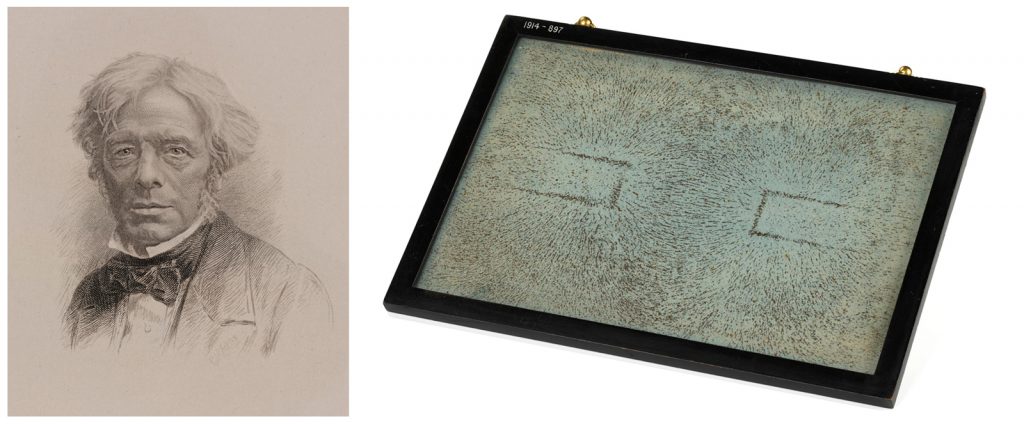
Named after Michael Faraday, the Farad is the SI derived unit of electrical capacitance, as declared at the Congrès internationale des électriciens (International Electrical Congress) in 1881 (The Electrician, 1881). The diagram shown above, which some may recognise from their science classes, was prepared by Michael Faraday and initialled by him on the back.[14] Using magnetic lines of force visualised by iron filings, it demonstrates the magnetic attraction between the unlike poles of two adjacent bar magnets. Faraday’s work on electromagnetism and electro-chemistry was deeply influential on the development of electrical telegraphy and later wireless telegraphy.
Volt
https://dx.doi.org/10.15180/191201/010
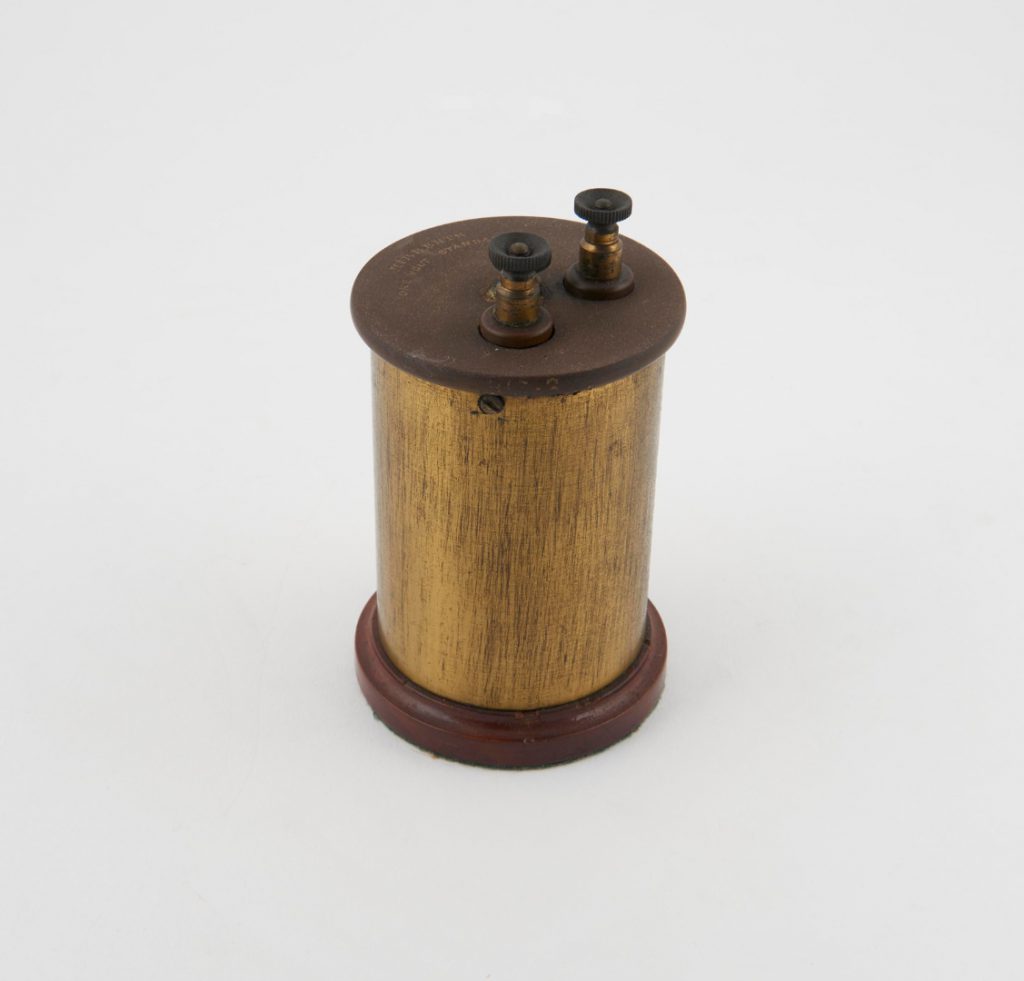
This electrical cell was designed and constructed by lecturer on Physics and Electro-Technology Walter Hillbert between 1894–1896 in order to produce a cell which would give an output voltage of exactly one volt.[15] Little is known about this object; it may have been used for teaching while also being a physical manifestation of electrical standards at the time – in particular how they applied to both electrical power and electrical telegraphy in the nineteenth century and beyond.
Conclusion
https://dx.doi.org/10.15180/191201/011Written in 1860, James Clerk Maxwell’s poem ‘Valentine from A Telegraph Clerk ♂ to a Telegraph Clerk ♀’ highlighted the human impulse behind and romantic potential of electrical telegraphy in the Victorian Age. Clerk Maxwell’s poem mixed romantic language with standards of electrical units and apparatus (and the people behind them) to paint an evocative portrait of the state of play of electrical telegraphy as it stood in 1860. Through a close reading of the poem and a wider exploration of the material culture represented through the Science Museum collections, I have engaged with both the technology and romance of the early years of electrical telegraphy.
Acknowledgements
Thanks to: Katy Barrett and Laura Humphreys, the editors of this Science Museum Group Journal special collection; my line manager Richard Dunn and to the Science Museum Group Journal team especially Kate Steiner for their support with this article; and to the anonymous reviewer for their helpful comments. Special thanks go to Science Museum Curator Emeritus John Liffen for his helpful and detailed comments. All and any errors in the text are mine. Last and not least, many thanks go to my wife Camen Lei for her support and countless cups of tea.
Tags
Footnotes
Back to text
For further details of James Clerk Maxwell and an appendix of his poetry, see Campbell, L and Garnett, W, 1882, The life of James Clerk Maxwell: with a selection from his correspondence and occasional writings and a sketch of his contributions to science (London: Macmillan) URL: https://archive.org/details/lifeofjamesclerk00camprich/ Back to text
URL: https://ethw.org/Transatlantic_Cable
Back to text
Back to text
Back to text
Back to text
Back to text
Back to text
Back to text
Back to text
Back to text
Back to text
Back to text
Back to text
Back to text

